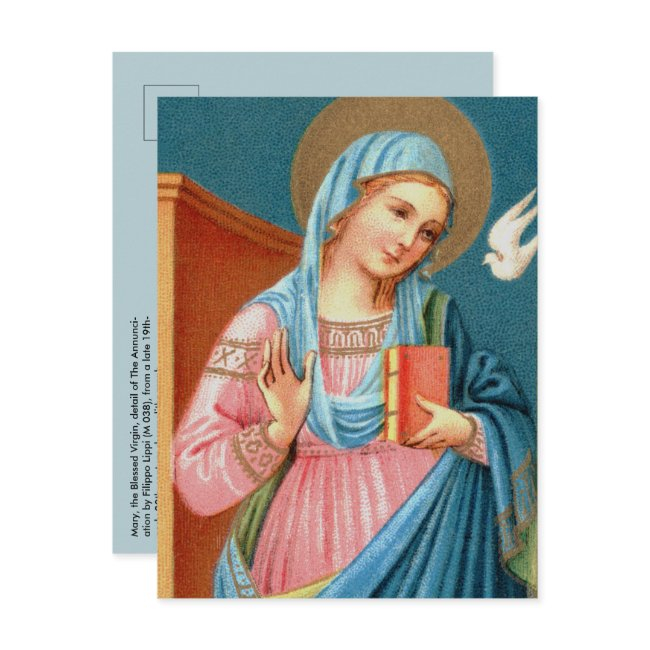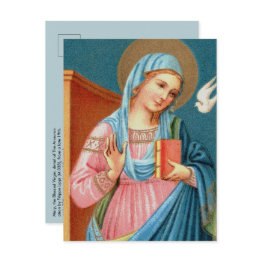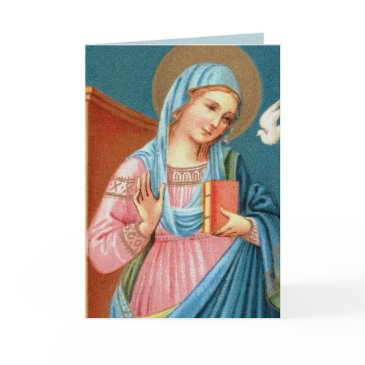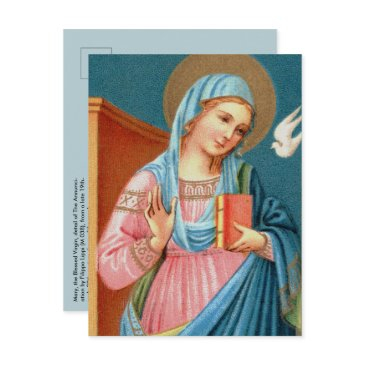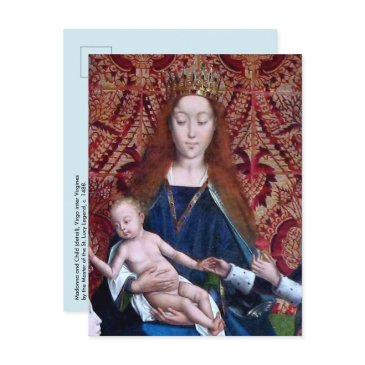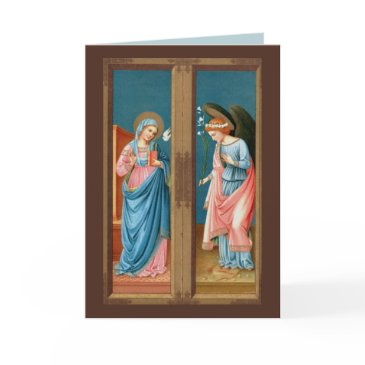Mary, From F. Lippi’s Annunciation (detail; M 038) Postinvitations
$1.56 per Invitation
Get it for only $$0.94 per invitation Learn How
Get 40% Off
You can save as much as 50% on your invitations
| Order | Save | New Price |
|---|---|---|
| 25+ Invitations | 15% | $$1.33 Per Invitation ($$0.23 Off) |
| 50+ Invitations | 25% | $$1.17 Per Invitation ($$0.39 Off) |
| 100+ Invitations | 40% | $$0.94 Per Invitation ($$0.62 Off) |
| 250+ Invitations | 45% | $$0.86 Per Invitation ($$0.70 Off) |
| 1000+ Invitations | 50% | $$0.78 Per Invitation ($$0.78 Off) |
“℣. The Angel of the Lord declared unto Mary, ℟. And she conceived of the Holy Spirit.” Thus, begins the Angelus the Church’s thrice-daily prayer to the Blessed Virgin Mary (BVM) that commemorates the Incarnation at the Annunciation. + The Annunciation was an immensely popular subject in the art of the Middle Ages and the Renaissance. As a two-person composition, the subject lent itself to use on the outer leaves of triptychs: the angel on one leaf; Mary, on the other. A triptych is an artwork—most often a panel painting—that is comprised of three parts hinged together in such a way that it can be displayed open or folded shut. + Here, Filippo Lippi (1406-1469) has painted the Annunciation in tempera on wood. In this detail, Mary is dressed in warm pinks and bright blues. Presumably, she has been studying the Scriptures or at prayer: she holds a now closed book in her left hand. Having risen to her feet at the angel’s greeting, her surprise is registered by her raised right hand. Her face is gentle and sweetly featured. Her gaze is fixed on the Holy Spirit in the guise of a white dove. She has given her Fiat, that is, she has consented to become the mother of the Savior. + Feast of the Annunciation: March 25; Feast of St. Gabriel the Archangel: September 29 + Image Credit (M 038): Mary, the Blessed Virgin, detail of an antique image of The Annunciation by Filippo Lippi (1406-1469) from a late 19th-early 20th-century postcard in chromolithography, originally published by E. Sborgi, Florence, Italy, from the designer’s private collection of religious ephemera. The original panels from a polyptych of unknown origin are in the Filippo and Filippino Room of the Uffizi Gallery in Florence. The Annunciation forms the upper halves of the two leaves while SS. Anthony Abbott and John the Baptist appear on the lower left and lower right, respectively.

